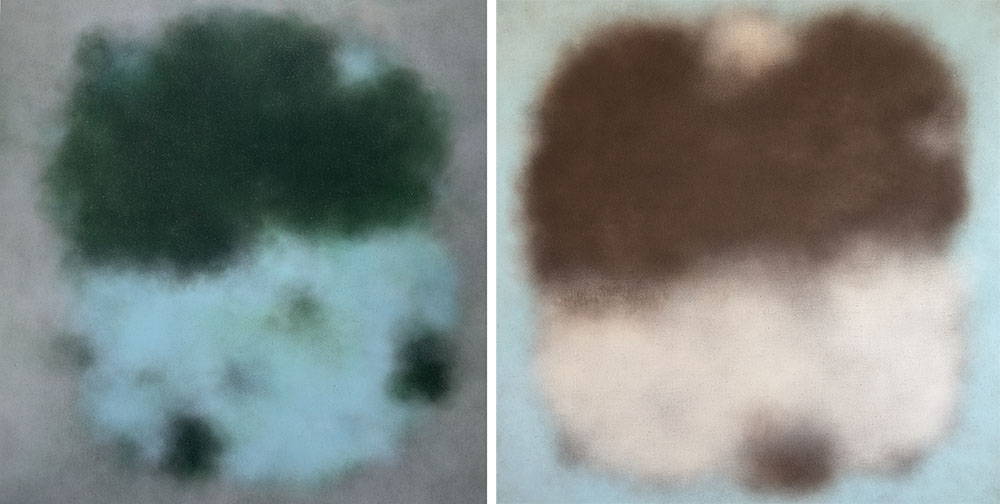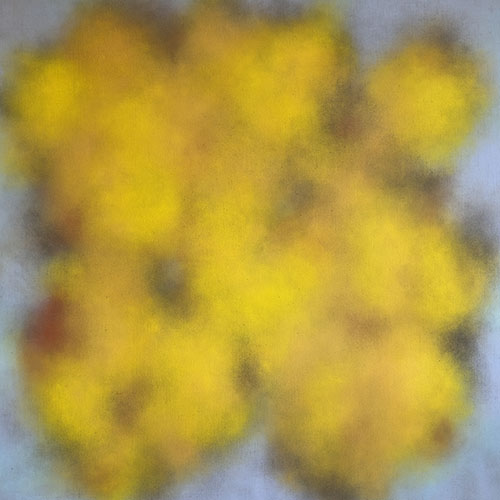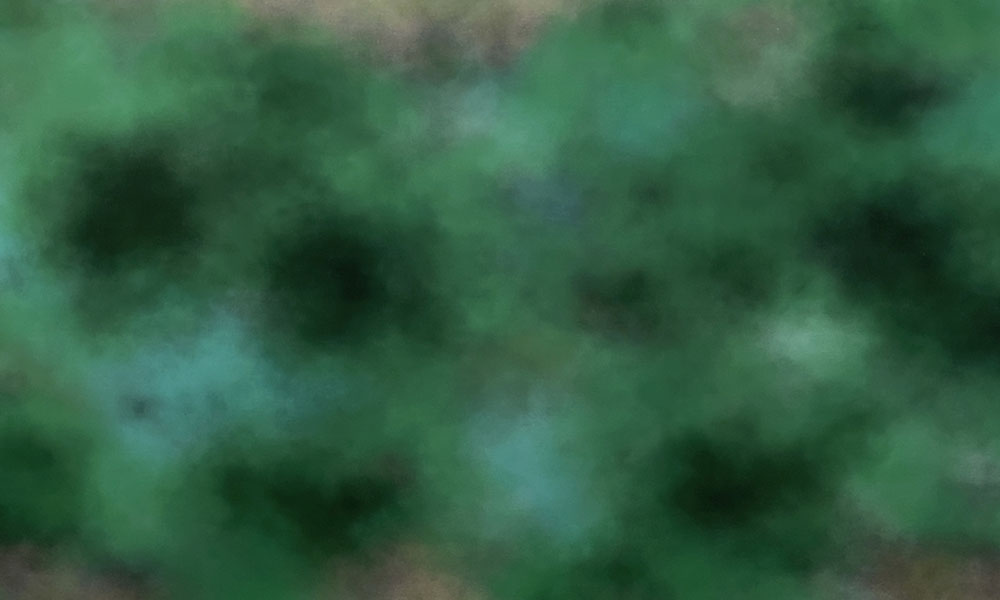by David M. Roth

Despite the attention given to Cynical Realism, Political Pop, Vulgar Art, the New Measurement Group and many other micro-movements that flowered during the final two decades of the 20th century, there remains in China an unabated reverence for the ancient past, one that in the hands of contemporary artists intersects Western traditions in ways familiar and strange. Consider the work of Beijing-based artist Xu Hongming, 53, as a case in point. His aim: “Do for Chinese art what Mondrian did for Western art.”
Toward that end, he’s taken the tradition of shanshui landscape painting and extracted its essence, isolating atmospherics and rendering them as billowing stains. They bleed into each other without any trace of the artist’s hand, arriving on canvas or silk as if telepathically transmitted. Calligraphic gestures, the bedrock of Chinese landscape painting? They’re nowhere to be found. Absent the usual markers – mountains, clouds, streams, trees, rocks, lakes, waterfalls – the best of Xu’s paintings resemble something akin to Rorschach blots. Or, photos of actual things – fruit, blossoms, foliage — thrown wildly out-of-focus.

The process by which these effects come into play consists either of powdered pigments sifted onto canvas and pelted with water or watercolor and ink treated similarly and occasionally flecked with glitter. In both cases, the liquids congeal in layers that appear to rest entirely on the surface, interrupted here and there by thin ridges of piled-up paint and regions where the weave of the cloth seems to have been distressed. When looking at these bold explosions of color, you may think of Mark Rothko, Helen Frankenthaler, Morris Louis or any number of Washington School color field painters. But where those artists aimed for emotional expressivity, Xu uses color to “envision the wholeness of the universe” – an outgrowth of his study of Song dynasty painter Mi Fu (1052-1107), best known for misty, mountainous landscapes. Xu, in his extrapolations, clearly favors mist over mountains, an reductive approach that might suggest affinities with Minimalism if the paintings weren’t so effusive. Even so, they resist concrete allusions, as the exhibition title (The Form of the Formless) and the series title (Not Clouds, Not Fog, Not Qi) indicate.
While the largest painting in the show, Quinlin Summer, a work stretching 23 linear feet, commands attention, I found myself drawn more toward several substantially smaller pieces, notable less for their rich colors than for fuzzy amorphous shapes that look like what I imagine newborns seeing before their eyes can focus. Two color-drenched works also stand out, one lemon yellow, the other strawberry red; both resemble fruit that’s been crushed and spread across the canvas without a trace of the physical act responsible.

While this level of abstraction might seem like a repudiation of the literati tradition, it does affirm two seemingly contradictory impulses: the Confucian mandate to operate in harmony with nature and Mao’s edict “to push history forward.” In doing both, Xu joins a select group of Chinese expatriate abstractionists, European painters (from Monet and Pissarro to Bacon and Richter) and Western photographers (from Julia Margaret Cameron and Alfred Stieglitz to Uta Barth and Bill Armstrong), all of whom made the blur an essential feature of their practices.
# # #
Xu Hongming: “The Form of the Formless” @ Qualia Contemporary Art through March 26, 2024.
About the author: David M. Roth is the editor, publisher, and founder of Squarecylinder, where, since 2009, he has published over 400 reviews of Bay Area exhibitions. He was previously a contributor to Artweek and Art Ltd. and senior editor for art and culture at the Sacramento News & Review.
David. As always Great writing.. Your web site is Great for me as lm not living close
to the Bay area. Thanks again for your
Informed reviews. Best Rolf